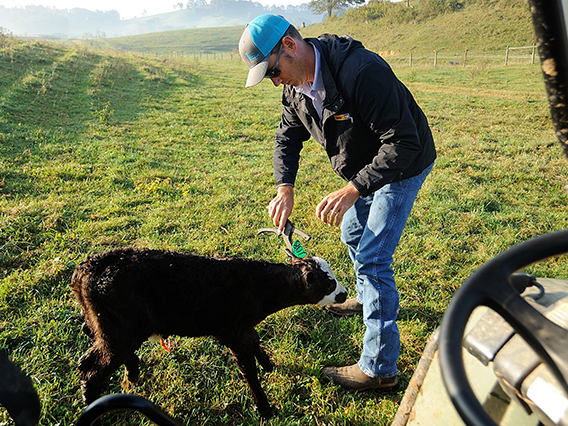Ask the Vet
Minimize Ear-Tag Loss
READER: We seem to be losing more ear tags than we did in the past. Do you have any tips on how to minimize this? Do you recommend any brand or type of tag that stays in better?
Dr. McMillan: Lost tags are a fact of life in the cattle business. There are lots of reasons ear tags get lost, but at our farm, most of the time the tag gets hung in a feeder, hay ring or brush. I am not aware of any study proving one brand to be superior to others.
Tags may rip the ear, or the stud may break. In our herd, we rarely have torn ears, and we often find the tags in reusable condition around feeding or congregating areas. I believe our tag loss has been greatly reduced since we started using cone-type ring feeders. Cows seem to eat for longer periods of time with these, and that reduces the times they pull their heads out of the ring.
This is also a good to time to emphasize the importance of removing bale wrap or twine. There are lots of good reasons to do this; reducing tag loss is just one of them. You can also help reduce tag loss by simply having adequate feeder or bunk space, and hay rings.
P[L1] D[0x0] M[300x250] OOP[F] ADUNIT[] T[]
I'll also emphasize proper placement in minimizing lost tags. Tags should be placed between the middle two ribs of the ear, about halfway from the head to the tip of the ear. If placed too low or too far from the head, they are more likely to get hung. Always use the correct tagging pliers and pin for the brand of tag you have.
Tag retention is a common issue anywhere cattle are raised. A tag-retention study out of Canada followed 2,000 calves, 1,000 yearlings and 700 cows for four years to report on viability of tag types, poor tag retention and the accuracy and availability of livestock traceability data. The overall tag-retention rate for calves exceeded 96%. The retention rate for yearlings was 99%. But, retention rates on mature cows dropped to 82% on average. I've seen some studies where losses varied from as low as 3% to as high as 35% for cows.
READER: I read an article that said we should not tag calves at birth. It made some really good points, especially about personal safety, allowing the cow and calf to bond, and saving time. What do you recommend?
Dr. McMillan: We are in the registered Hereford business. We tag, collect birthweights and udder-score the dam as soon as we find a calf. This is common in most registered herds. Our cows are incredibly gentle, and proper identification is critical. That said, I know this can be more difficult and, at times, less important in some commercial operations. At the end of the day, it's important to remember each operation is different, and you have to do what's best for you.
There are certainly advantages to tagging calves at birth. Many producers also choose to castrate bull calves at birth. Tagging helps keep a record of which calves you've treated, and if a calf happens to get separated from its dam, they make it easier to get them back together. Tags are also helpful if you need to identify and match up twins.
Lastly, I see tags as a good way to keep track of that calf that just doesn't look right and needs watching. If you need to treat or follow up on that calf, being able to record its identifier and note treatments, symptoms and responses can go a long way in making sure you don't miss something.
READER: Our herd bull suddenly came up lame on one of his front feet. We were about to turn him out with the cows when we noticed it. I treated him with LA-200, and after a week, he is not much better. I heard about using Draxxin for foot rot. Is that a good option?
Dr. McMillan: Draxxin is approved for foot rot in cattle, and it can be very effective; but it is also expensive when we are talking about using it in a large bull. My first rule for treating lameness is always to lift the foot up and confirm the animal actually does have foot rot.
In 40 years of practice, I have removed roofing nails from the soles of feet and have found wire, wood and rocks embedded between the claws. An infection can start at the heels and run under the sole. No antibiotic will work until issues like this are addressed. And, don't wait too long. A lame bull can turn into a crippled bull -- and cripple is forever. Call your vet as soon as you spot a problem.
> Please contact your veterinarian with questions pertaining to the health of your herd. Every operation is unique, and the information in this column does not pertain to all situations. This is not intended as medical advice but is purely for informational purposes.
> Write Dr. Ken McMillan at Ask The Vet, 2204 Lakeshore Dr., Suite 415, Birmingham, AL 35209, or email vet@progressivefarmer.com.
[PF_0221]
(c) Copyright 2021 DTN, LLC. All rights reserved.



